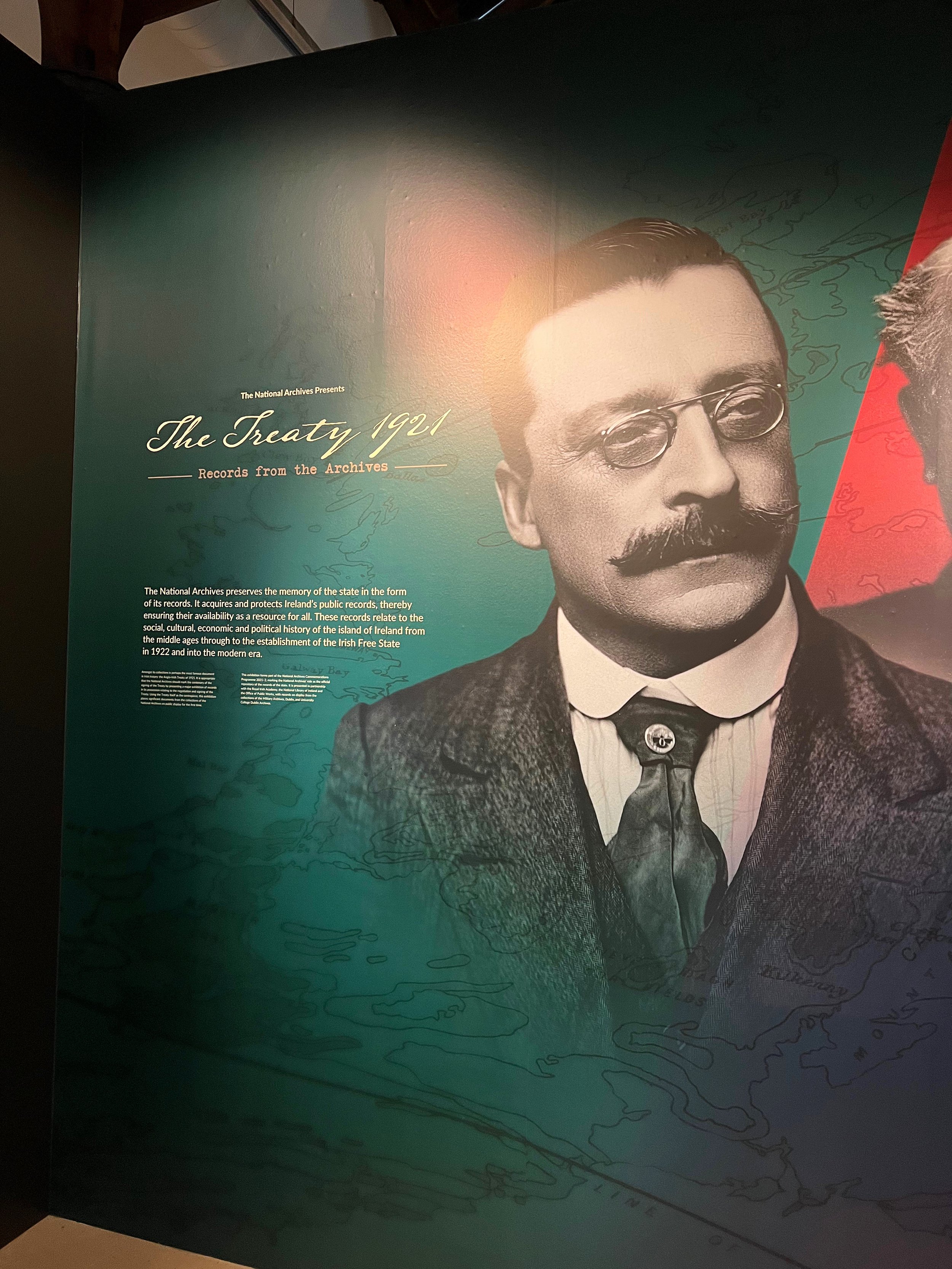The Treaty, 1921: Records from the Archives
It is only fitting that I should share an Irish-history post before Paddy’s Day. I will preface this saying this exhibition is only running until 27 March 2022 so I know I am not giving a huge amount of notice here on this. The exhibition opened in December and I only made my way to it the first week of March – slacking!
The Anglo-Irish Treaty is one of the most significant historical documents held by the National Archives. Using The Anglo-Irish Treaty as the centrepiece, the National Archives present an exhibition that pulls significant historical records, official documents and private papers for the first time in the history of the State, including the first public presentation of the Treaty document.
The Anglo-Irish Treaty
The building the exhibition is held, The Coach Houses Gallery, is small but there was a plethora of information and archival footage packed in. Upon arrival you are greeted by a receptionist who explains how the exhibition works. They do take a limited number of walk-ins but I would advise booking tickets here to avoid disappointment. There are 2 doors, one to the left of the reception desk, and one to the right. Using reports, images and footage, The Treaty, 1921: Records from the Archives establishes the Treaty negotiations in the political context of the Irish revolution and the First World War.
The exhibition starts on the left with the ‘Irish side’ of the Treaty negotiations and presents the work of the Irish plenipotentiaries and their secretariat, by displaying the documentary record that they left behind. The exhibition also chronicles the day-to-day life in London for the men and women who were part of the Irish delegation, from parties attended, and dinners to the tense final days and hours leading to the signing of the Treaty on 6 December 1921. The exhibit ends with the delegation’s return to Dublin, and the Dáil Éireann cabinet meeting that pointed to the split in the independence movement that emerged over the terms of the Treaty, and the divisions that eventually led to civil war. I would be interested to see if Dublin Castle mark the Irish Civil War this year or if they will wait until 2023, the centenary year of the end of the war.
A feature of the exhibit I personally found unique and had not seen before were these sound ‘pods’. When you stood directly under them you would hear readings of documents in the exhibit. It made the archives really come alive. These were also a much more sanitized way to listen to something in a museum without having to put on headphones that God only knows how many people have touched and had on their heads.
I would say, there was a lot of text throughout the exhibition so if you are not into reading or don’t have an interest/previous knowledge of the subject already, that could be off-putting. I did not mind this but I know it is something that could be bothersome to others so I wanted to mention it here.
The exhibit is free and located in Dublin Castle which is super central which makes for a perfect excuse to go out before or after the exhibition for a treat. What that treat is up to you but there are plenty of coffee shops, bakeries, pubs, etc. around to choose from. I have three Dublin city guides (one, two, three) you can use to help find something close by! Please note, some of these locations unfortunately may be closed now due to Covid and I do apologise if that is the case.
Coach House Gallery, Dublin Castle, Dubh Linn Gardens




